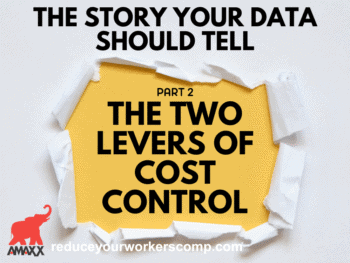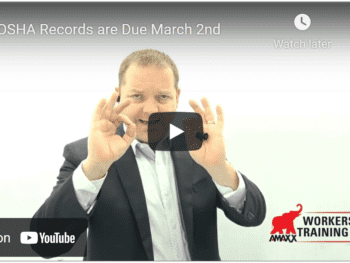When you don’t know how you compare against the national average you are likely to:
Click Link to Access Free PDF Download
1- Make wrong decisions.
2- Act on emotion rather than on reality, blowing a problem out of proportion.
3- Try to fix problems that don’t exist or fix the wrong problem, wasting a lot of money and resources. Here’s a true story about a large company I worked with recently … The company called me in because they were very unhappy with their claim administrator which was an insurance company claims handling facility, and planned to “move the business.” Actually, I was hired by the broker to try to resolve this emergency situation. I listened to the client’s concerns and got to know their company over the next couple of weeks in an effort to determine the source of the problem, and see if there was anything that could be done short of moving their business. Changing from TPA to TPA is a very expensive process for a company and for the broker because it takes time and personnel to all involved. Of course, the TPA isn’t happy about losing the business either. The Situation: I did several things including …
1- Reviewed the account instructions – to see what the program parameters were. Which PPO was used, who had settlement authority, etc.
2- Review of Files – Planned a massive file review to include every open file in that claims office office which was a massive and expensive undertaking. Even if all the other benchmarks are met, until you know how the files are handled and whether there is a good outcome (employee back to work quickly, etc.) you really don’t know how good a job the TPA is doing.
3- Benchmarking Report – I needed to understand the problem more clearly thus requested the latest benchmarking report. I was told there WAS NO BENCHMARKING REPORT. No problem, just tell me what your Cost Per Employee or Cost Per FTE (full-time equivalent) is. Noone knew. So, I spent a couple days developing the benchmarks for the company.
4- I traveled to Atlanta (location changed to protect the innocent) and visited the claim office, met the supervisor, the adjusters and observed the workflow– to gain an understanding of the situation. During the visit, in a high level meeting, the supervisor indicated she had never met with or spoken to the company risk manager (her client). The client had previously told me she had never met with or spoken to the supervisor. I asked the supervisor if she was aware they were about to lose the business because the company was so upset about how the claims were being handled. She was not aware of this. I let her know there had been meetings with the client and broker and they were intereviewing other TPAs. I suggested she telephone the client and invite her to the office. With her boss in attendance she looked truly shocked. I asked her why she had never spoken with the client and she said “Well, she has never called me.” I later asked the client why she had never spoken with the supervisor and she said “Well, she has never called me.” I was beginning to realize we had a communication problem rather than a file-handling problem.
The Result: The Cost Per FTE was HALF the national average. This meant that basically, the problem with claims handling wasn’t as severe as the company perceived it to be, if indeed there was a problem.
The files had a 95% excellence score, thus there was not a file handling problem.The team of 7 auditors determined that 89% of the claims were handled in an excellent manner according to the clients account instructions, the carriers best practices and in complaince with state law.
FREE DOWNLOAD: “5 Critical Metrics To Measure Workers’ Comp Success”
The MD made sure all medical conditions were recognized and employees received proper care. The score card indicated in 98% of the claims the employees received excellent quality care. This is key because you can handle all the files exceptionally well from a claim handling standpoint, but IF the claim wasn’t compensable because the medical condition wasn’t work-related, you’ve just paid a claim you shouldn’t have, and have spent a lot of money unnecessarily. But the root cause is that there is insufficient medical expertise involved in the files on a proactive basis.
The Solution: PICK UP THE PHONE AND CALL YOUR CLIENT, YOUR ADJUSTER, THE SUPERVISOR! Things get out of control without communication. Get your benchmarks. Have an MD review your files. For more cost-saving tips go to WC Cost Reduction Tips.
Show the REAL cost of workers’ comp with the Real Cost Calculator. Workers’ Comp Kit® is a web-based online Assessment, Benchmarking and Cost Containment system for employers. It provides all the materials needed to reduce your costs significantly in 85% less time than if you designed a program from scratch.
Do not use this information without independent verification. All state laws are different. Consult with your corporate legal counsel before implementing any cost containment programs.
©2008 Amaxx Risk Solutions, Inc. All rights reserved under International Copyright Law. If you would like permission to reprint this material, contact Info@WorkersCompKit.com
FREE DOWNLOAD: “5 Critical Metrics To Measure Workers’ Comp Success”














